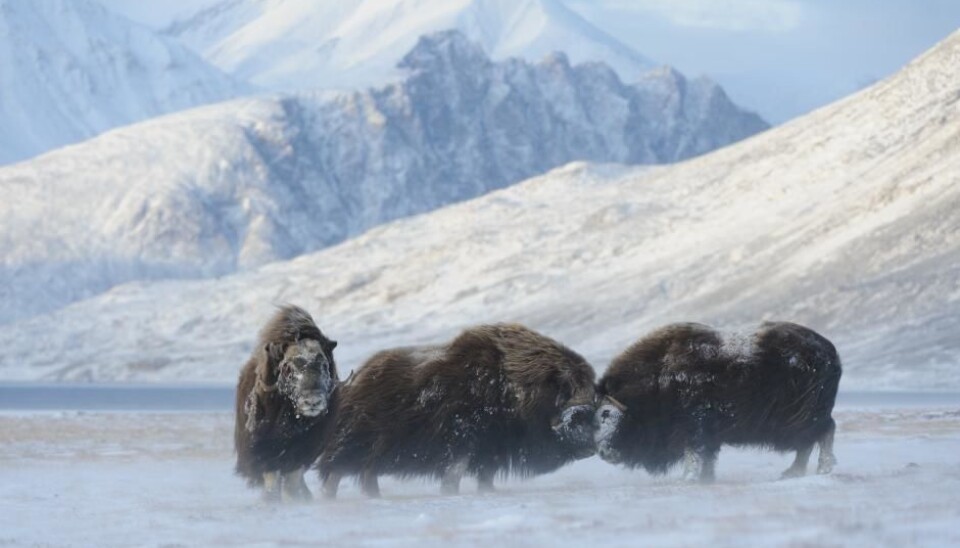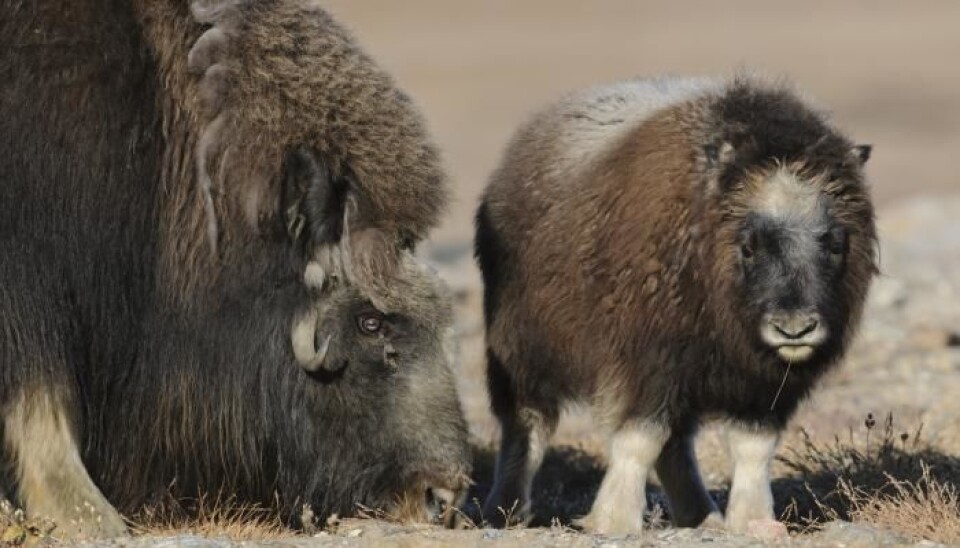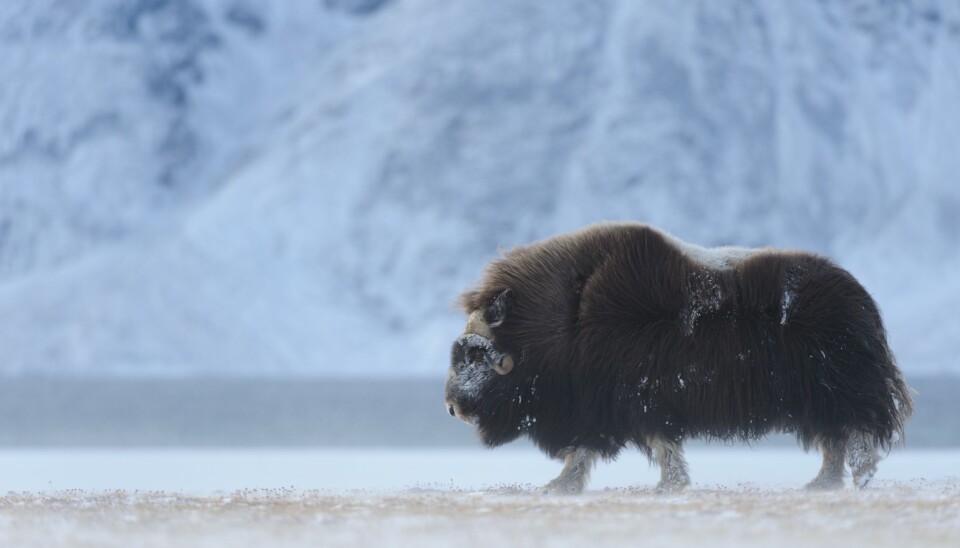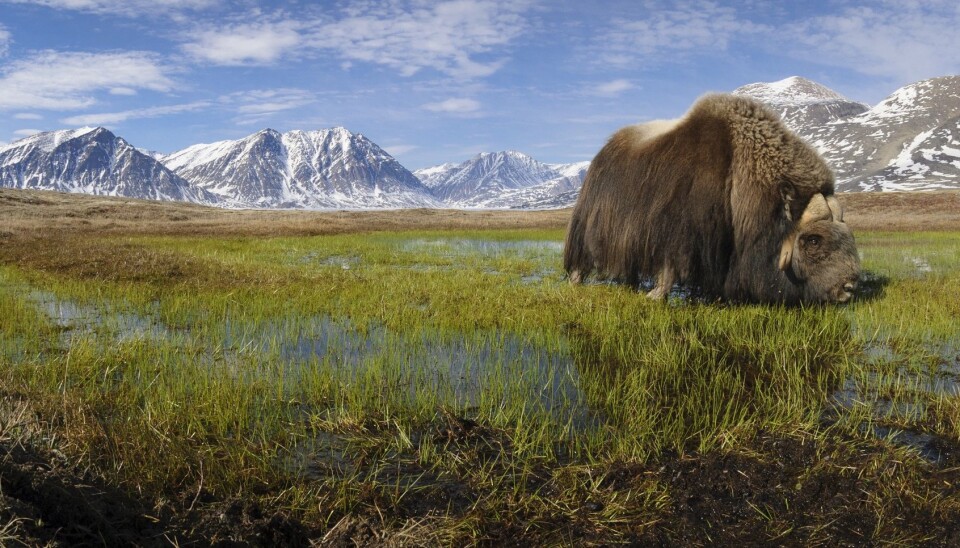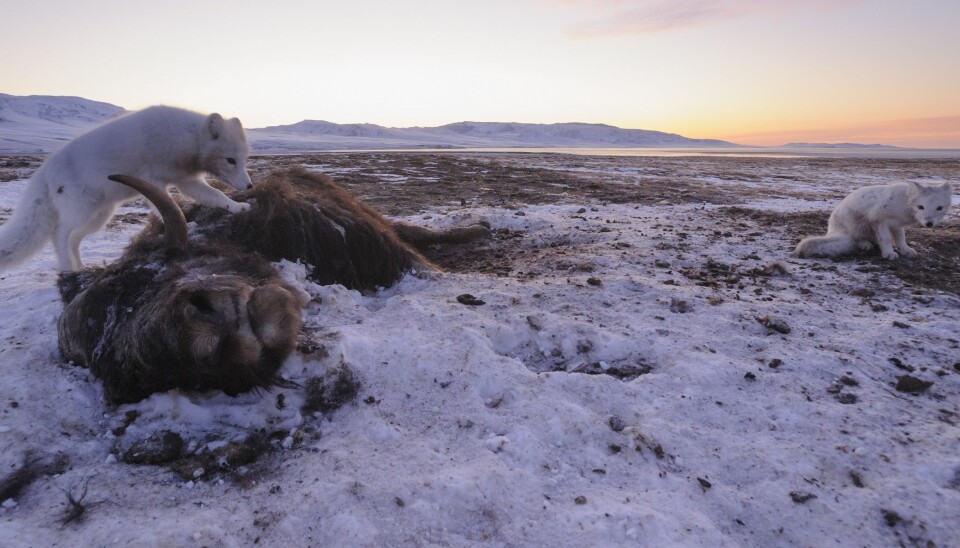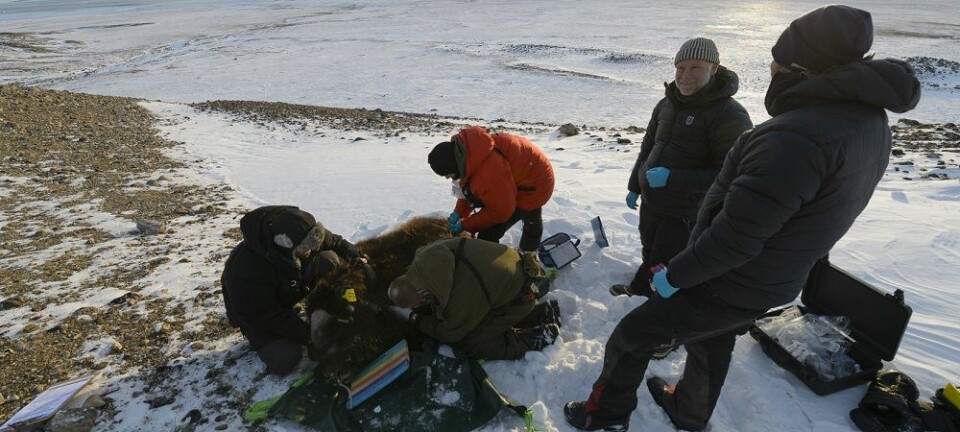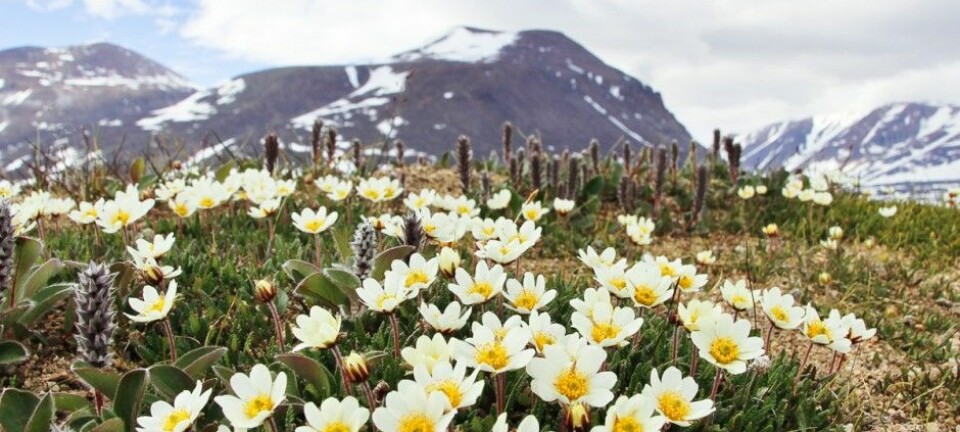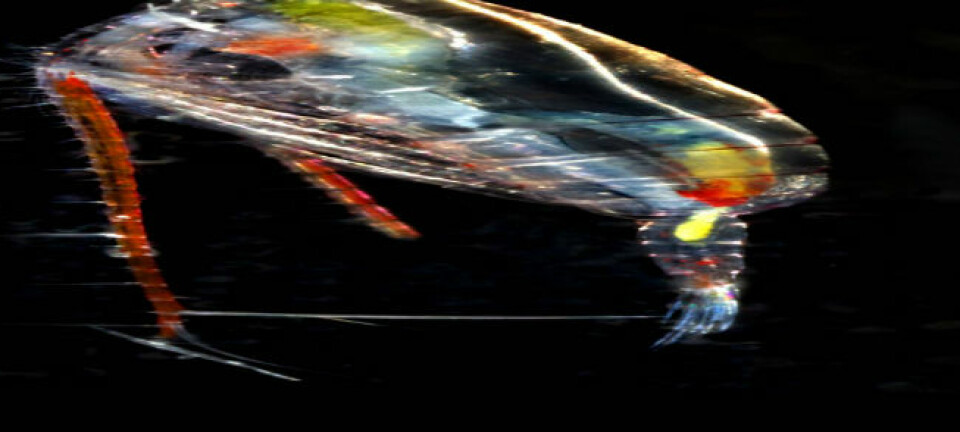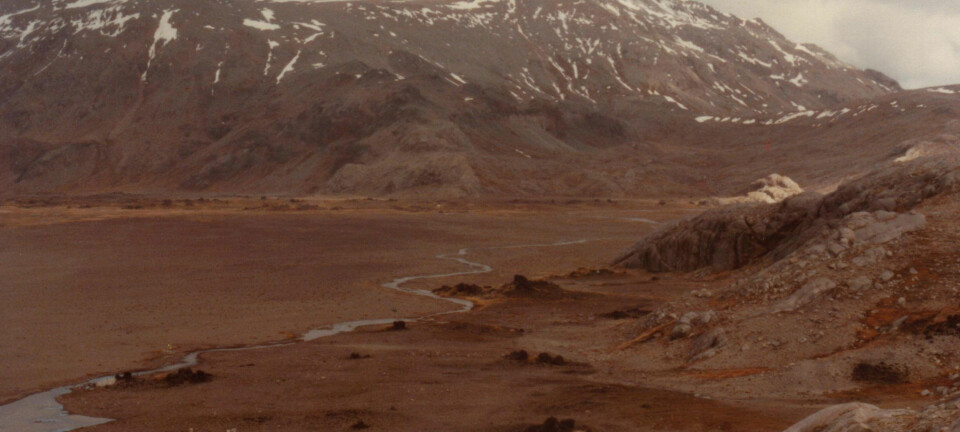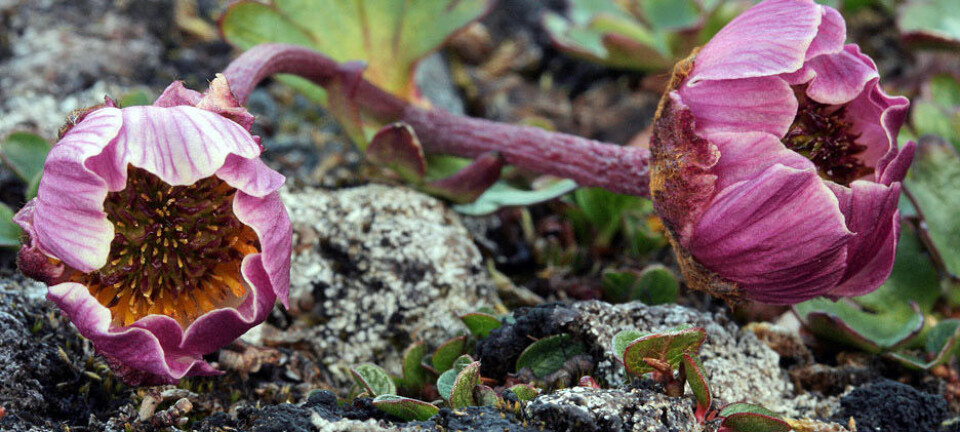Climate change threatens the existence of Arctic musk oxen
Rising temperatures are making Arctic musk oxen struggle so much to find food that their very existence could soon be threatened, say scientists.
Polar bears may be the poster boy of Arctic animals threatened by climate change, but musk oxen are not far behind, say a group of scientists from Copenhagen Zoo and Aarhus University in Denmark.
After two expeditions in 2013 and 2015, the scientists have witnessed the musk oxen’s fight for survival first hand. The already extreme Greenland climate is exacerbated by climate change. Winter snow and rain and warmer summers mean that this iconic animal is struggling to find food.
“In the future, we expect that there’ll be more snow in northern Greenland, which can prevent the musk oxen from migrating south to feed in the winter. [This means that] fewer calves are born or that they die of hunger,” says expedition leader Niels Martin Schmidt from the Department of Bioscience, Aarhus University, Denmark.
The results of their expeditions are published in the scientific journal Polar Biology.
Musk oxen cannot break through ice
During their expedition, Schmidt and his colleagues witnessed musk oxen digging their noses into snow and ice, clearly struggling to find patches of grass to graze on.
“Instead of the loose powdery snow that they can usually push aside with their snout and legs, there was a hard layer of ice. They cannot break through it and struggle to survive. We think that this species is a good indicator of the effect of rising temperatures and large swings in climate,” says expedition scientist and veterinarian Carsten Grøndahl, from Copenhagen Zoo.
When rain falls on top of snow and then refreezes, it forms a hard layer of ice, which the musk oxen cannot break through,” says Schmidt.
Read More: Buttock hair used to monitor Arctic musk ox
Warmer summers bring disease
Arctic climate has changed dramatically in the last 20 years, says Schmidt.
“Summer temperatures has risen between three and six degrees Celsius over the last 20 years in the area around our research station, Zackenberg station, in north-east Greenland. It’s a dramatic development,” he says.
“A warmer Arctic means that new parasites can survive in north-east Greenland and spread disease. It’s already happened in Canada, where a new disease has begun to infect musk oxen,” says Schmidt.
These diseases are also dangerous for other Arctic animals, and people, too.
“In Siberia, animals have contracted anthrax [released from the Permafrost] because of climate change, and a newborn child recently died after coming into contact with an infected reindeer,” says Schmidt.
Read More: When will the Arctic be ice free?
The Arctic is shrinking
Musk oxen are expected to migrate further north as global temperatures continue to rise. Eventually, they could run out of places to go.
“The Arctic is situated at the top of the world and so eventually there won’t be anywhere else for them to go. Continuing climate change will really put this species under pressure and in the end it could lead to their extinction,” says Schmidt.
No one knows when this could happen. But climate change has already had huge consequences for musk oxen.
See a herd of Canadian musk ox dodge a pack of wolves (Video: BBC / YouTube)
Calves die of cold
The scientists witnessed marked changes between the two expeditions in 2013 and 2015.
“In 2015, we saw less than a tenth of the animals that we saw in 2013,” says Carsten Grøndahl.
In a shocking turn of events, not a single calf survived the 2015 winter.
“We didn’t see a single calf. The winter was probably too difficult with lots of snow. A few generations without any calves mean bad news for the population,” says expedition team member and biologist, Mikkel Stelvig from Copenhagen Zoo.
“The calves have wool but they don’t have a topcoat like their parents. They can’t cope in the rain as their wool coat just sticks together and they risk dying from cold,” says Stelvig.
Read More: Ecosystems driven out of sync by climate change
Reduced meat consumption can help
While musk oxen may not be quite as charismatic as polar bears, they deserve just as much attention, says the scientists. They hope that the data collected during their expeditions can help the conservation effort.
“We should think about reducing out CO2 emissions. We can do this, for example, by consuming less, saving on electricity, and eating less meat,” says Stelvig, who finds the thought of musk oxen dying out almost unthinkable.
“It’s just like saying ‘let’s throw out all of Vincent van Gogh’s paintings--they don’t have any real benefit’” he says. “To me, musk oxen represent a system in nature that is greater than us humans, and we should respect and protect it.”
It would be catastrophic for the Arctic ecosystem and biodiversity, if it were to lose a species that has been around on Earth for so many years, say the scientists.
Stelvig says the continuing loss of species is a disaster waiting to happen.
“It’s like an airplane constantly losing the screws that hold it together. If we continue to lose species… at some point or another, the plane will crash,” says Stelvig.
-------------
Read the Danish version of this article on Videnskab.dk
Translated by: Catherine Jex
